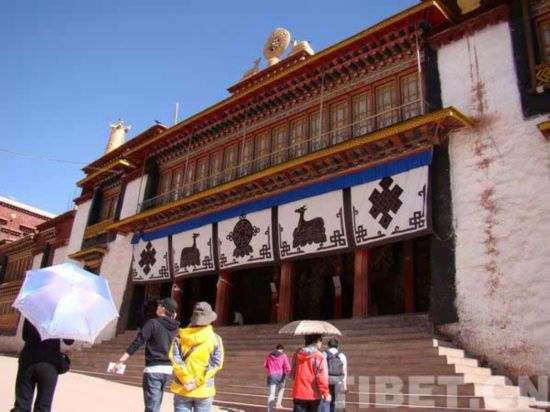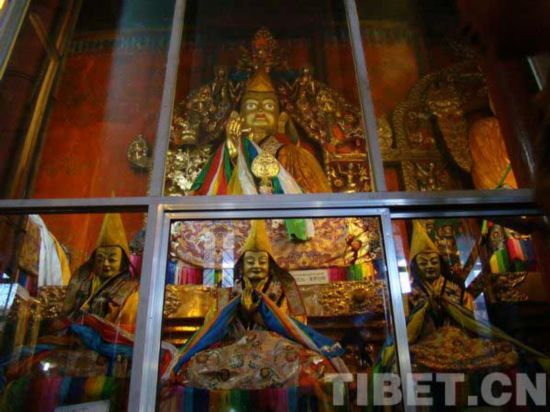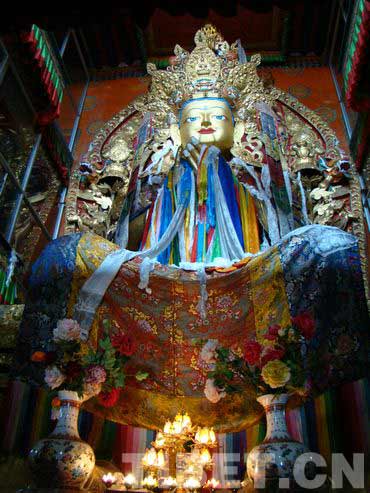Sitting at the confluence of the Ngomchu River and the Zachu River, the Champa Ling Monastery was founded in 1444 by Sherab Zangpo, a disciple of Tsongkhapa, named after its Chanmpa Buddha worshiped there.
As the oldest and largest monastery of the Gelug Sect (or yellow sect) in east Kham, the whole building is featured with an unique Tibetan style with yards and halls standing around, making it a piece of classic architectural works.

There are four reincarnation systems in Champa Ling Monastery, and most of Tulkus were conferred titles in the Qing Dynasty, among whom Phagpalha Jigme Tenpai Gyatso, the 6th Tulku of Champa Ling Monastery, was the first to receive the title in 1791 by Emperor Qianglong, the 6th emperor of the Qing Dynasty.
The Phagpalha Tulku system ranks the top reincarnation system, which has passed down to the 11th Tulku up till now. The 11th Tulku Phagpalha Geleg Namgyal is the vice chairman of Chinese People's Political Consultative Conference (CPPCC) as well as chairman of Tibet Autonomous Region branch of the CPPCC.

There used to be 5,000 monks studying in the monastery, whereas now there are about 1,300 monks. The monastery is fairly quiet at the moment because most of monks are in their 2-month vacation in July and August, during which they can go back home and visit their families and relatives while carrying out some prayer activities for them, according to the custom.

